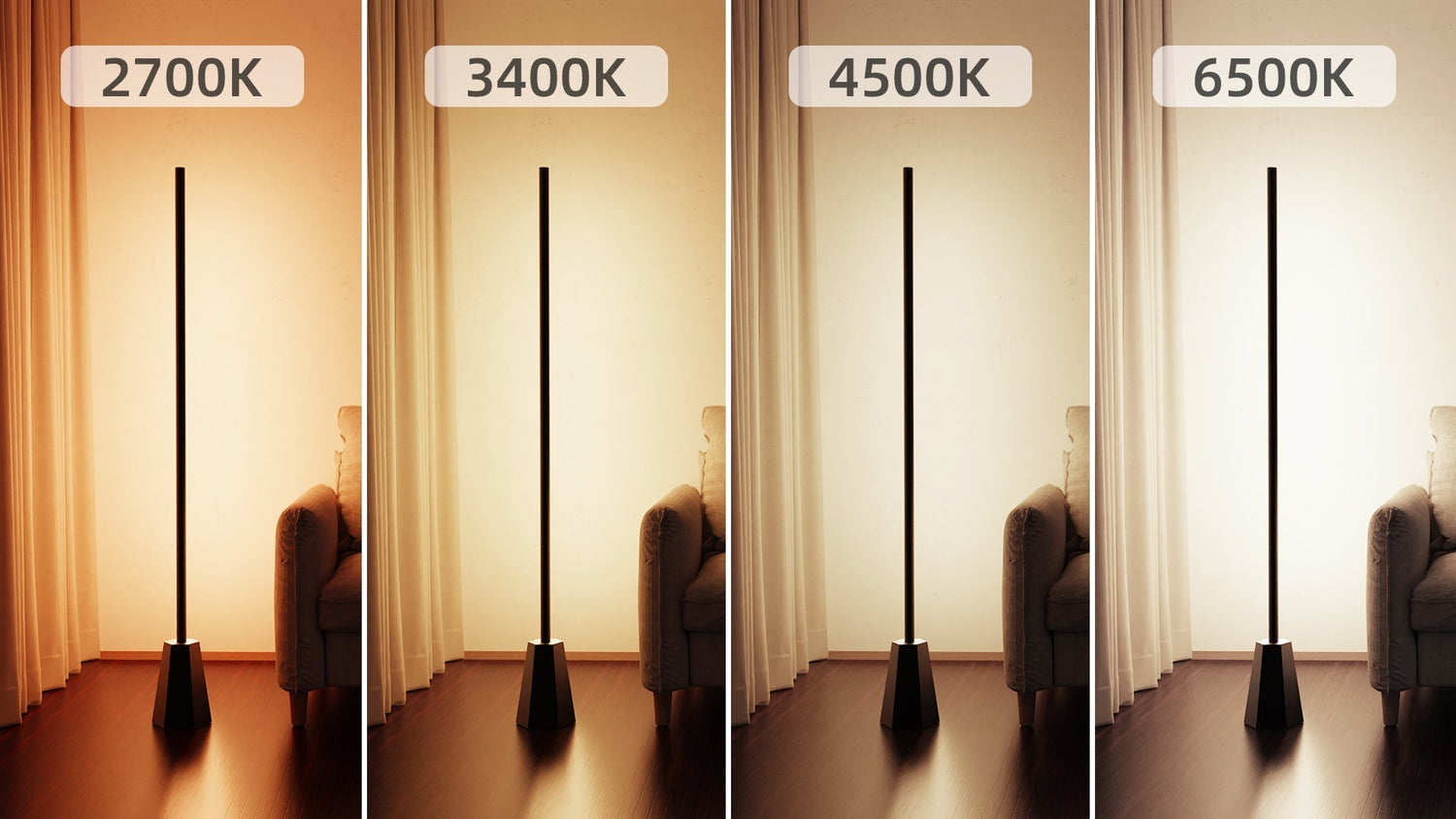
2300K vs. 3000K vs. 4000K vs. 5000K vs. 6500K: Which is Better?
Lighting is no longer just about illumination—it’s about creating moods, enhancing productivity, and even improving health. With smart lighting, you can dynamically adjust color temperature (measured in Kelvin, K) to suit different activities and times of day. But with options ranging from warm 2300K to stark 6500K, how do you choose? This guide breaks down the science, scenarios, and smart strategies to help you master light like a pro.
2300K–3000K: Warm white (relaxing, cozy)
4000K: Neutral white (balanced, natural)
5000K–6500K: Cool white (energizing, clinical)
Why it matters: Light impacts circadian rhythms. Blue-rich cool light (5000K+) suppresses melatonin (the sleep hormone), while warm light (2300K–3000K) promotes relaxation. Harvard studies confirm that improper lighting can disrupt sleep and productivity.
Smart Lighting Applications by Scenario
1. Residential Spaces
A. Living Room: The Heart of Flexibility
2700K–3000K: Perfect for movie nights or hosting guests. Pair with dimming features for a cinema-like experience.
Smart Tip: Use voice commands (e.g., "Alexa, set movie mode") to dim lights and shift to 2300K automatically.
4000K: Ideal for family activities like board games or reading. Enhances clarity without harshness.
6500K: Rarely needed here, but useful for deep-cleaning sessions.

Product Example:DeckTok Smart Floor Lamp L1 (supports 2700K–6500K).
B. Bedroom: Sleep Sanctuary
2700K: Wind down with warm tones 1–2 hours before bed. Use smart schedules to gradually dim lights.
3000K: For bedtime reading or midnight bathroom trips. Pair with motion sensors to trigger soft glows.
4000K–5000K: Morning alarm substitute! Program lights to simulate sunrise (e.g., 3000K → 5000K over 30 minutes).
C. Kitchen & Dining
3000K–4000K: Warm-neutral light for cooking (enhances food color accuracy) and family dinners.
Smart Feature: Use a "Dinner Party" scene that dims overhead lights to 3000K and brightens under-cabinet strips to 4000K.
5000K: Reserve for precision tasks like chopping veggies or baking.
Pro Tip: Install tunable recessed lights (e.g., Lutron Ketra) that auto-adjust based on natural light levels.
Smart Feature: Use a "Dinner Party" scene that dims overhead lights to 3000K and brightens under-cabinet strips to 4000K.
5000K: Reserve for precision tasks like chopping veggies or baking.
D. Home Office
4000K–5000K: Boosts focus during work hours. Studies show cool light improves alertness by 15–20%.
2700K–3000K: Switch to warm tones for video calls to soften facial shadows.
Automation Idea: Link smart lights to your calendar—shift to 5000K during meetings, 3000K for breaks.
2. Commercial & Workspaces
A. Offices
5000K–6500K: Default for open-plan offices to enhance productivity. Combine with glare-free task lighting.
4000K: Use in conference rooms to reduce screen glare and foster collaboration.
B. Retail Stores
3000K: For boutiques and cafes to evoke warmth and luxury.
5000K–6500K: In grocery stores or electronics shops to highlight product details.
Dynamic Lighting: Program color shifts (e.g., 2700K → 4000K) to guide customer flow.
Example: Apple Stores use 4000K LED tracks to balance product visibility and ambiance.
C. Hospitality
2700K–3000K: Hotel lobbies and bedrooms for a welcoming vibe.
4000K: Bathroom vanity lighting for makeup application.
3. Health & Wellness
Circadian Lighting:
Morning: 6500K to kickstart energy.
Evening: 2700K to prepare for sleep.
Therapy: 3000K–4000K for yoga/meditation spaces.
How to Choose the Right Color Temperature
| Scenario | Recommended Kelvin | Smart Lighting Features |
|---|---|---|
| Relaxation/Sleep | 2300K–3000K | Scheduling, motion sensors |
| Cooking/Detail Work | 4000K–5000K | Voice control, task lighting zones |
| Productivity/Precision | 5000K–6500K | Occupancy sensing, daylight sync |
Top Smart Lighting Systems for Color Temperature Control
DeckTok Foldable Floor Lamp L2: Best for home users, with 15 million colors and pre-set "recipes" like "Concentrate" (2700K-6500K).
Lutron Ketra: Commercial-grade tuning (±1% accuracy) for architects and designers.
DeckTok Smart Landscape Spot lights P5: Affordable choice, with a color temperature range of 2300K-6500K and Alexa/Google integration.
Common Mistakes to Avoid
Mixing Color Temperatures: Stick to a 500K difference within a room for visual harmony.
Ignoring CRI (Color Rendering Index): Aim for CRI >80 for accurate color perception.
Overusing Cool Light: Limit 5000K+ to <4 hours daily to avoid eye strain.
Light That Adapts to You
There’s no single "best" color temperature—the magic lies in smart lighting’s ability to adapt. Whether it’s 2300K for a cozy night in or 6500K for a high-energy work sprint, the right light elevates every moment. Invest in tunable smart bulbs, experiment with scenes, and let your space evolve with your needs. After all, lighting shouldn’t just brighten your room—it should brighten your life.
Ready to upgrade? Start with a single smart bulb and unlock a world of possibilities! 💡


